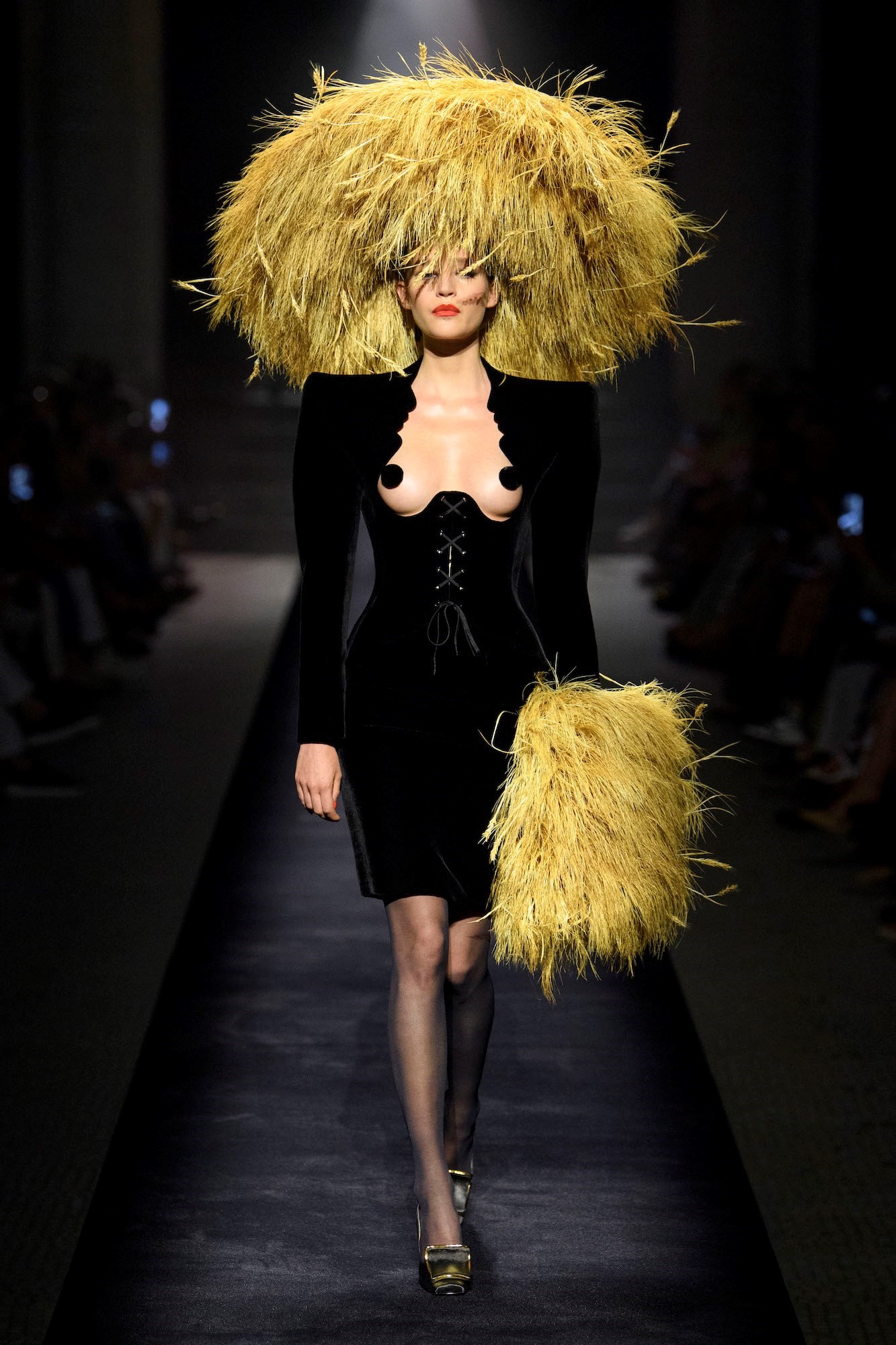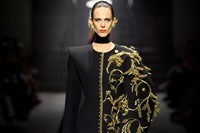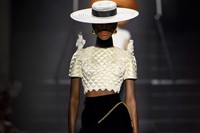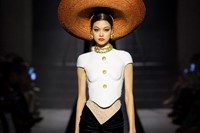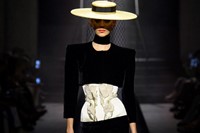The work of Elsa Schiaparelli is currently being celebrated in a blow-out exhibition at Paris’ Musée des Arts Décoratifs – an institution whose unwieldy title is abbreviated to MAD, which was a word often applied at the time to Schiaparelli and her work. This was, after all, a couturier who created a necklace of creepy-crawling bugs, who scarred dresses with fat plastic zippers, who made buttons shaped like miniature acrobats or life-sized butterflies, who plonked a shoe on a woman’s head and called it a hat. The house founded by Schiap (it rhymes with ‘nap’) closed in 1954 and had been bumbling around without much success until 2019, when a young American named Daniel Roseberry was given the reins, and free rein.
Schiaparelli herself had an affinity with America – she lived there for a while, toured the country giving lectures during the war, and counted American women, including the Duchess of Windsor and movie stars like Mae West, among her best clients. And Roseberry seems to have the best of both worlds – namely, a French eye when it comes to the precision of couture detailing and fit, and an American aptitude for extravagance and theatricality. Indeed, Roseberry has a touch of Gilbert Adrian, the exuberant costume designer of MGM whose clothes, in the 1930s, were only rivalled by Schiaparelli for their influence on worldwide fashion. They can both take partial credit for the wide-shouldered silhouette that characterises the era, for instance – Schiap’s inspired by Indonesian dancer’s costumes, Adrian’s by the technical challenge of making Joan Crawford hips seem especially narrow.
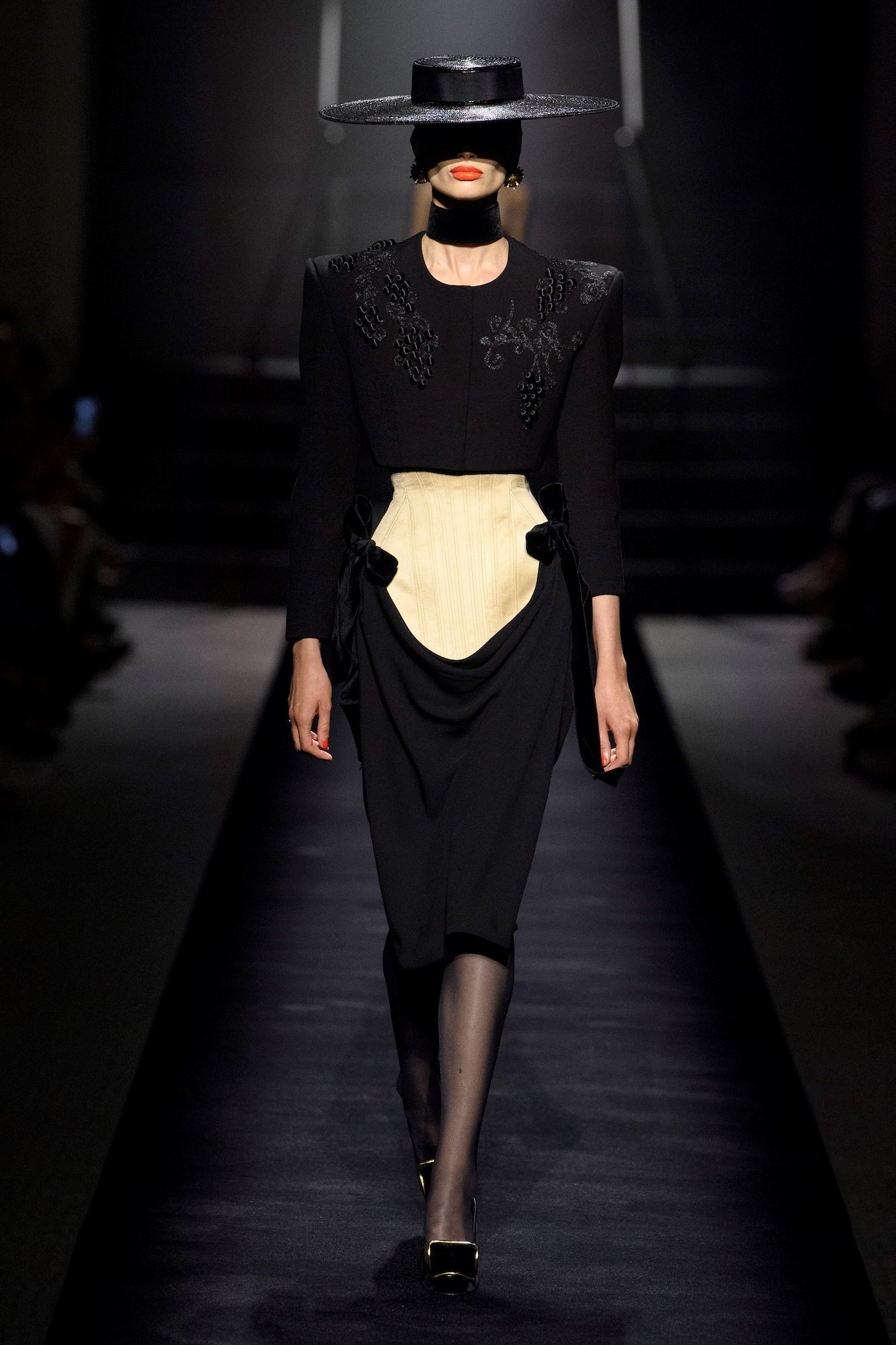
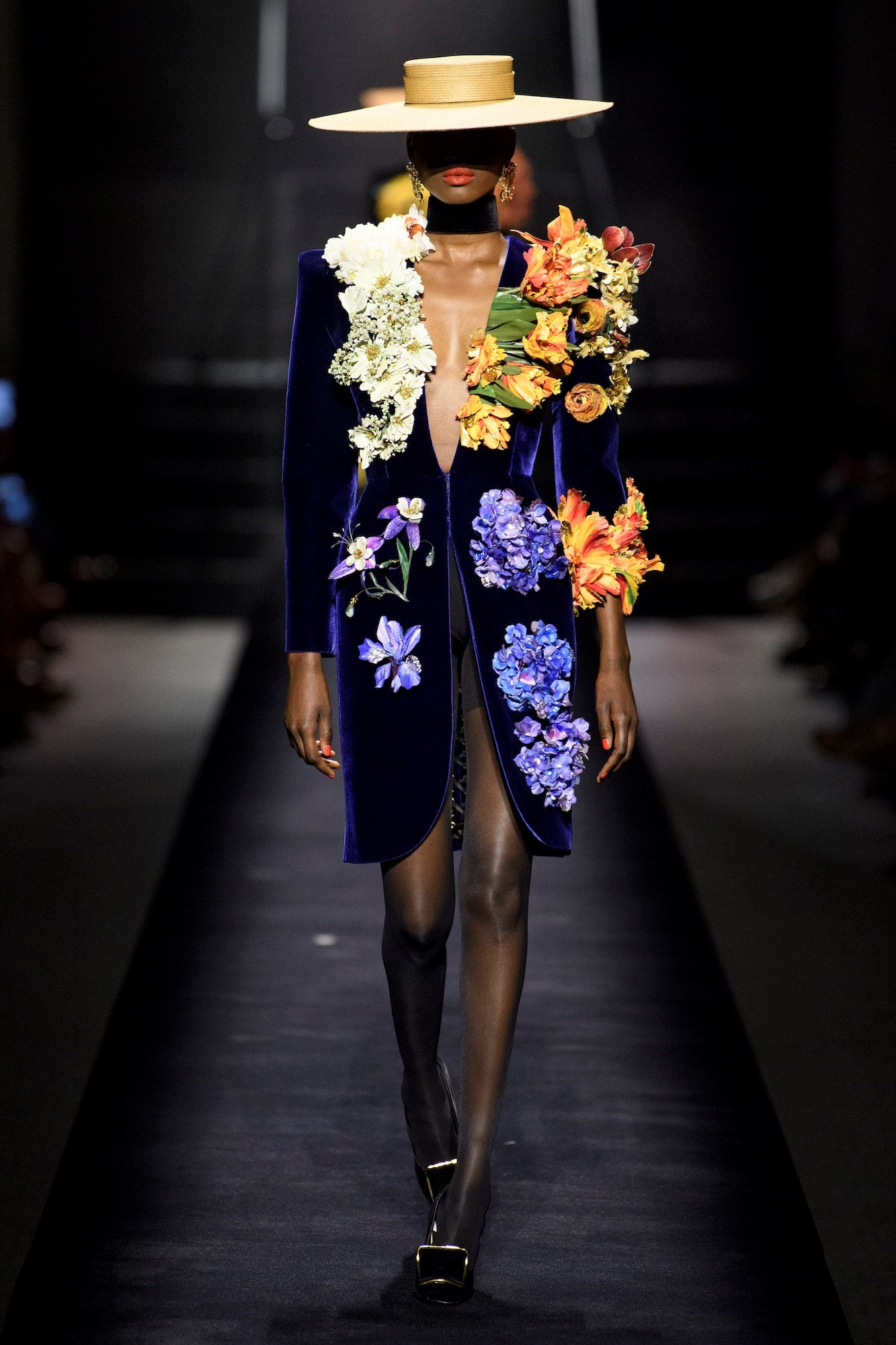
Daniel Roseberry’s clothes won’t transform the way women dress every day – but that isn’t his aim. He recalled his mother asking why he couldn’t make clothes that are more democratic, more accessible. He said Walmart never made him dream. And his Autumn/Winter 2022 Schiaparelli show wasn’t about reality – rather, surreality, in the truest Schiaparelli house tradition. He pitched his catwalk inside the museum showing Elsa’s work – in a different wing, granted, but it seemed as if the models were walking off the catwalk and into the exhibition. And wouldn’t you know it? When the exhibition opened later that evening, a number of dresses with specific archival antecedents had slip-streamed right in. There was a version of the 1936 ‘Desk’ suit, a collaboration with Salvador Dalí in part inspired by his painting The Anthropomorphic Cabinet, with pockets resembling drawers to be tugged right out of the body; there was a dress with a décolletage sculpted like two Cocteau-ean faces about to kiss, and topped with a giant trembling hat of feathers teased to look like straw. And there was a half-and-half coat, one side strict and sculpted in black wool, the other an arabesque of gilding that resembled Schiaparelli’s suits inspired by rococo ormolu and Sèvres porcelain.
Other outfits, cannily, referenced not so much Schiaparelli herself as her legacy – as traced through the work of half-a-dozen designers profoundly shaped by her visions. There were bits of Gaultier in the crisscrossed corset laced detailing, sometimes dresses peeled away to expose fleshy-pink satin girdles, as if stripping the body to its skin. There were swathes of Saint Laurent in sculpted velvets and draped satins, and in a series of jackets embroidered with pansies and sunflowers that recalled his famous homages to Van Gogh – although these were three-dimensional explosions of exuberance, the flowers veritably sprouting from the women’s’ bodies. And there were great globs of Christian Lacroix, whose work Roseberry adores and whose colour sense was evoked by an ice-blue satin skirt whorled into an ice-cream sundae swirl below a matador jacket in ochre and black. That – like much of this show – was as giddy and joyous as Lacroix’s best.
Roseberry posed a simple question in the notes accompanying this show: “What’s wrong with wanting to make beautiful things?” It’s a question fashion often seems to take as rhetorical – namely, that there’s much wrong with it, and so fashion needs to justify it at every step. Especially in haute couture, whose very existence seems to many to be anachronistic, out-of-date, and effectively unjustifiable. Roseberry, however, embraces fashion as pure creative expression, in much the manner of Elsa Schiaparelli herself. He creates beautiful things, excellent beauty being that which, as the old saying goes, has to “hath” some strangeness in the proportion. But Roseberry doesn’t dress his clothes up with anything else. They’re indulgent, whimsical, fantastical fashion of the very highest order. And for him – and indeed us – that’s the only justification they need.
